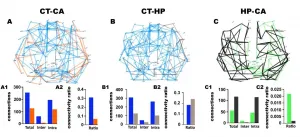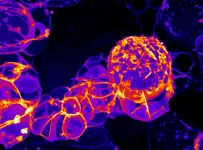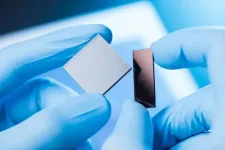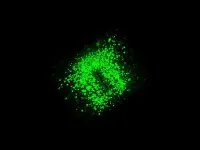New study identifies plasticity disparities between patients with brain malformation
Patients with Corpus Callosum Dysgenesis present distinct reconfiguration of their neural connections
2021-05-19
(Press-News.org) Recently published in the scientific journal Brain Communications, a new study distinguished structural patterns between individuals with corpus callosum dysgenesis (CCD), a congenital condition that consists of the absence or incomplete development in the connecting structure between the two brain hemispheres. The research was carried out by the D'Or Institute for Research and Education (IDOR), the University of Pittsburgh, Oswaldo Cruz Foundation (Fiocruz), and the Federal University of Rio de Janeiro (UFRJ).
Investigating CCD is an arduous task for doctors and neuroscientists. There aren't many patients available for research, and the anatomical variability of brains with CCD creates a broad clinical spectrum. Due to brain plasticity - the organ's ability to create alternative connections to ensure its functioning in adverse situations -, the clinical scenario range from the complete lack of symptoms to epilepsy and psychomotor retardation, in addition to being commonly found in autism spectrum disorder. "The CCD is one of the greatest mysteries of neuroscience. To this day, researchers don't fully know how this neuroplasticity occurs. But we've had new discoveries in the past years, mainly through in vivo methods that analyze these patients' brain connections via imaging", informs the study's corresponding author, Dr. Fernanda Tovar-Moll, M.D., radiologist and president of IDOR.
Considering the challenges presented by this pathological plurality, the study's researchers analyzed the structural and neurological alterations of 11 patients with CCD, men and women aged from 4 to 33 years old. Of these, 6 had a complete absence of the corpus callosum (agenesis) and the other 5 were characterized by its hypoplasia, which is the underdevelopment of the structure.
The research was carried out through functional and structural magnetic resonance imaging. The images were first evaluated by a neuroradiologist to confirm the diagnosis of CCD and then were examined again to map the patients' neural connections, which were compared with a control group composed of 45 healthy individuals.
As expected, the results showed that structural connectivity in individuals with agenesis or hypoplasia of the corpus callosum differed from the images in the control group. However, clear differences were also noted within the groups with CCD.
Despite having fewer connections when compared to the other two groups, patients with agenesis connected brain regions in a functionally similar way to healthy patients, while individuals with hypoplasia showed a broader, but abnormal and variant reorganization between brain connections, which would justify the worsening of symptoms in patients with this type of CCD. "The hypoplastic corpus callosum usually connects regions of the brain that it shouldn't connect. Instead of positive neuroplasticity, this characteristic could be the cause of symptoms", explains Diego Szczupak, Ph.D. and the study's first author.
Although previous studies have already described the anatomical heterogeneity in brains with CCD, the different types of dysgenesis have not yet been widely compared to each other, and the distinctions between their adaptive brain plasticity are still unfamiliar. These findings show that the hypoplasia and agenesis in CCD have unique fingerprints and use distinct plastic mechanisms to compensate for the partial or complete lack of the corpus callosum. But the authors emphasize that this does not necessarily mean that the coherence, speed, and precision of these connections reflect the same brain functioning as in healthy individuals.
Dr. Fernanda Tovar-Moll is also part of an international research consortium, the IRC5, whose mission is to discover the causes, consequences, and possible interventions for corpus callosum dysgenesis and associated brain connectivity disorders. From June 27th to July 1st, IDOR is organizing an IRC5 meeting addressed to family members, doctors, neuroscientists, and psychologists interested in the topic. Information about the event will be available soon on the website http://www.idor.org and on IDOR's social networks.
INFORMATION:
[Attachments] See images for this press release:

ELSE PRESS RELEASES FROM THIS DATE:
2021-05-19
Philadelphia, May 18, 2021 - Many socioeconomically disadvantaged children face poor cognitive and mental health outcomes, and researchers are working to determine the specific factors that link childhood conditions to those poor outcomes, including how they might shape brain circuitry. In a new study, researchers have examined how "neighborhood disadvantage" can affect the developing brain, including the brain's connectivity between regions.
The study appears in Biological Psychiatry: Cognitive Neuroscience and Neuroimaging, published by Elsevier.
Sarah Whittle, PhD, and Divyangana Rakesh, lead authors of the study, studied existing brain scans from 7,618 children aged 9-10 collected as part of the Adolescent Brain Cognitive Development ...
2021-05-19
EUGENE, Ore. -- May 19, 2021 -- High-resolution imaging of fruit flies at the University of Oregon has captured mechanical motions that stem cells use to make neurons, the cells that make up the brain.
These motions coordinate cell division with differentiation, where newly born cells become neurons. Differentiation is essential for building the brain circuitry in complex organisms that underlies human cognition and emotions, said Ken Prehoda, a professor in the UO's Department of Chemistry and Biochemistry.
Prehoda was principal investigator of a project published online May 18 in the journal ...
2021-05-19
Researchers at UVA Cancer Center have unveiled important new insights into how hormones known as androgens act on our cells - and the discovery could boost efforts to develop better treatments for prostate, ovarian and breast cancers.
The findings shed light on how androgens interact with their receptors inside cells to affect gene activity. This process is important in both healthy cells and certain cancers. Hormone therapy for prostate cancer, for example, aims to reduce the amount of androgen in the body, or to stop it from fueling the cancer cells. However, ...
2021-05-19
Researchers at the National University of Singapore (NUS) and Tohoku University have demonstrated that an array of electrically connected spintronic devices can harvest a 2.4 GHz wireless signal, which can be used to power and charge small electronic devices and sensors.
The researchers from NUS and Tohoku University have successfully synchronized the four electrically connected magnetic tunnel junction (MTJ), for the signal transmission at 2.4 GHz. Furthermore, the eight MTJs array was integrated with the conventional battery-free electronics to harvest a wireless signal of 2.4 GHz to a DC signal, which is used to power light emitting ...
2021-05-19
In a world hungry for cheaper, more efficient renewable energy, Australian researchers have served up a treat.
Work led by the ARC Centre of Excellence in Exciton Science has shown that the two-dimensional (2D) thin films used in some perovskite solar cells closely resemble a sandwich. Perovskite is an exciting material at the forefront of solar energy research and design.
Previously, scientists thought these 2D perovskite films had a 'gradient' structure, in which certain components were found deep in the material, with other complementary elements only located nearer to the surface, like topping on a cracker.
However, in a paper published ...
2021-05-19
Nearly a quarter of pregnant women say they've been around secondhand smoke - in their homes, at work, around a friend or relative - which, according to new research, is linked to epigenetic changes - meaning changes to how genes are regulated rather than changes to the genetic code itself - in babies that could raise the risk of developmental disorders and cancer.
The study, published today in Environmental Health Perspectives by researchers at Virginia Commonwealth University Massey Cancer Center, is the first to connect secondhand smoke during pregnancy with epigenetic modifications to disease-related genes, measured at birth, which supports the idea that many adult ...
2021-05-19
While a pint-sized snorer may seem adorable tucked up in bed, studies shows that children with sleep disordered breathing are likely to show aggressive and hyperactive behaviours during the day.
The recommended treatment is an adenotonsillectomy - the removal of adenoid and tonsils - not only to fix the snore, but also the behaviour.
Yet according to new research from the University of South Australia, while the surgery can cure a child's snoring it doesn't change their behaviour, despite common misconceptions by parents and doctors alike.
Conducted in partnership with the University ...
2021-05-19
The nerve cells, also called neurons, in our brain control all the basic processes of our body. For this reason, there are different types of neurons distributed over specific regions of the brain. Researchers at the Max Planck Institute for Metabolic Research and the CECAD Cluster of Excellence in Aging Research of the University of Cologne have developed an approach that allows them to show that neurons that are supposedly the same are actually very different: they not only sense different hormones for the body's energy state, but also have a different influence on food intake. This can have a direct effect on our metabolism, for example by differentially restraining our appetite.
The brain processes our sensory perceptions, controls our behaviour and stores ...
2021-05-19
Traditionally, an infection is thought to happen when microbes - bacteria, fungi, or viruses - enter and multiply in the body, and its severity is associated with how prevalent the microbes are in the body.
Now, an international research team led by Nanyang Technological University, Singapore (NTU Singapore) has proposed a new way of understanding infections. Their study of close to 400 respiratory samples from patients with bronchiectasis, a chronic lung condition, has shown that microbes in the body exist as a network, and that an infection's severity could be a result of interactions between these microbes.
Through statistical modelling ...
2021-05-19
Among the large cast of microbiome players, bacteria have long been hogging the spotlight. But the single-celled organisms known as protists are finally getting the starring role they deserve.
A group of scientists who study the interactions between plants and microbes have released a new study detailing the dynamic relationships between soil-dwelling protists and developing plants, demonstrating that soil protists respond to plant signals much like bacteria do.
An enormous variety and diversity of microbes live in soil, and studying how these organisms interact with each ...
LAST 30 PRESS RELEASES:
[Press-News.org] New study identifies plasticity disparities between patients with brain malformation
Patients with Corpus Callosum Dysgenesis present distinct reconfiguration of their neural connections







